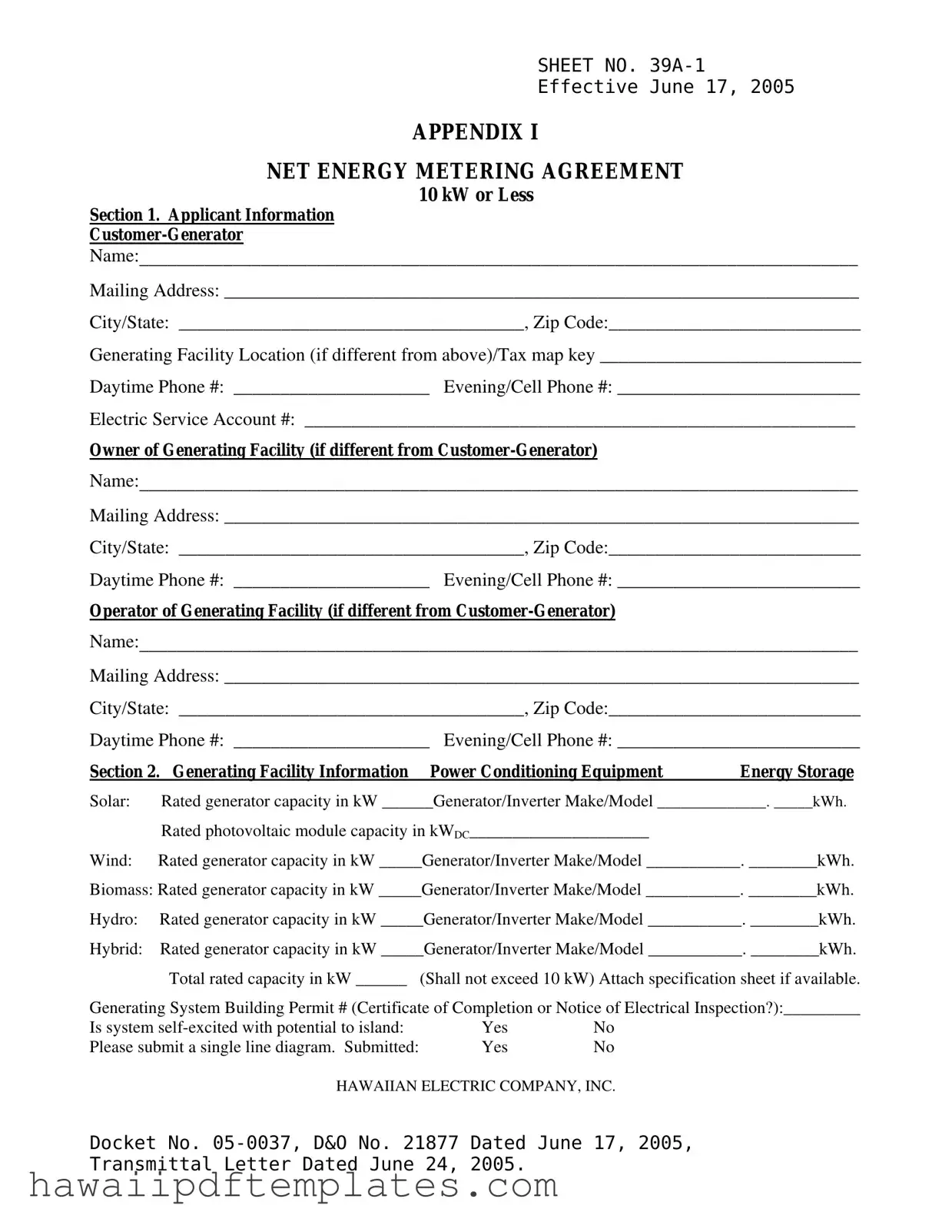Hawaii 39A PDF Form
The Hawaii 39A form is a Net Energy Metering Agreement designed for customer-generators with systems rated at 10 kW or less. This form is essential for those looking to connect their renewable energy generation facilities to the Hawaiian Electric Company’s grid. Completing this form is the first step toward enjoying the benefits of net energy metering, so don't hesitate to fill it out by clicking the button below.
Customize Form Online
